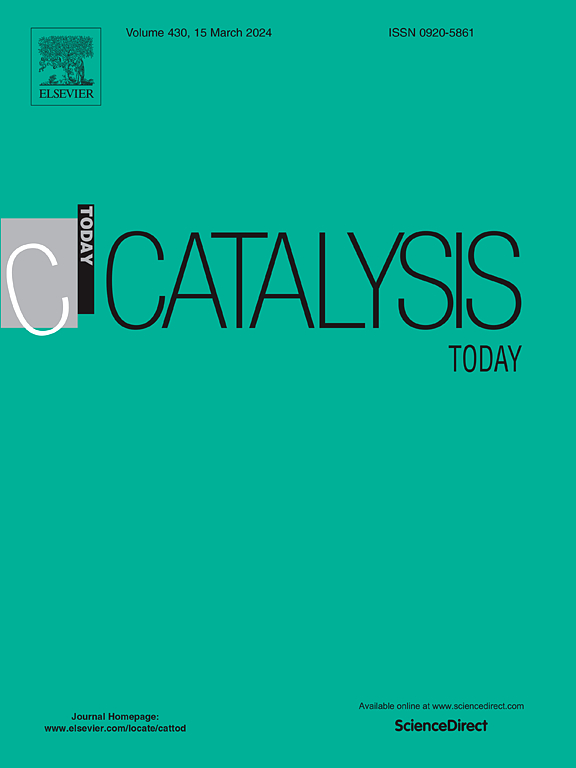Improved productivity in direct dimethyl ether synthesis and sorption enhanced DME synthesis using tungstosilicic acid as the acidic function
IF 5.3
2区 化学
Q1 CHEMISTRY, APPLIED
引用次数: 0
Abstract
Renewable dimethyl ether (DME) can reduce the carbon footprint in LPG and transportation sectors. The direct synthesis of DME (DDMES) is attracting a great deal of attention because it is possible to increase the productivity of DME. However, DDMES is hindered by the formation of a high amount of water, which promotes the deactivation of both catalytic phases used in the DDMES, namely Cu/ZnO/Al2O3 and γ-Al2O3. This is particularly relevant when CO2-rich syngas is used, since it leads to a higher production of H2O. In this work we show that heteropolyacids such as HSiW are a suitable alternative to state-of-the-art γ-Al2O3 for the dehydration of methanol during the DDMES. This is because HSiW is not deactivated by the presence of water in the reaction medium. Thus, catalytic beds with HSiW reach up to four times higher DME productivity than those containing γ-Al2O3. This feature is further exacerbated when water is removed from the reactor by means of a sorbent, i.e., during the sorption enhanced direct DME synthesis (SEDMES). Thus, the total carbon conversion is higher for SEDMES than for DDMES regardless of the actual nature of the acid catalyst.
提高了直接二甲醚的合成效率,并以钨硅酸为酸性功能,吸附增强了二甲醚的合成
可再生二甲醚(DME)可以减少液化石油气和运输行业的碳足迹。直接合成二甲醚(DDMES)能够提高二甲醚的生产率,因此备受关注。然而,DDMES 受阻于大量水的形成,水会导致 DDMES 中使用的两种催化相(即 Cu/ZnO/Al2O3 和 γ-Al2O3)失活。当使用富含二氧化碳的合成气时,这一点尤为重要,因为这会导致产生更多的 H2O。在这项工作中,我们发现在 DDMES 过程中,HSiW 等杂多酸可以替代最先进的 γ-Al2O3 用于甲醇脱水。这是因为 HSiW 不会因反应介质中存在水而失活。因此,含有 HSiW 的催化床的二甲醚生产率比含有 γ-Al2O3 的催化床高四倍。当通过吸附剂将水从反应器中去除时,即在吸附增强型直接二甲醚合成(SEDMES)过程中,这一特点会进一步加剧。因此,无论酸催化剂的实际性质如何,SEDMES 的总碳转化率都高于 DDMES。
本文章由计算机程序翻译,如有差异,请以英文原文为准。
求助全文
约1分钟内获得全文
求助全文
来源期刊

Catalysis Today
化学-工程:化工
CiteScore
11.50
自引率
3.80%
发文量
573
审稿时长
2.9 months
期刊介绍:
Catalysis Today focuses on the rapid publication of original invited papers devoted to currently important topics in catalysis and related subjects. The journal only publishes special issues (Proposing a Catalysis Today Special Issue), each of which is supervised by Guest Editors who recruit individual papers and oversee the peer review process. Catalysis Today offers researchers in the field of catalysis in-depth overviews of topical issues.
Both fundamental and applied aspects of catalysis are covered. Subjects such as catalysis of immobilized organometallic and biocatalytic systems are welcome. Subjects related to catalysis such as experimental techniques, adsorption, process technology, synthesis, in situ characterization, computational, theoretical modeling, imaging and others are included if there is a clear relationship to catalysis.
 求助内容:
求助内容: 应助结果提醒方式:
应助结果提醒方式:


